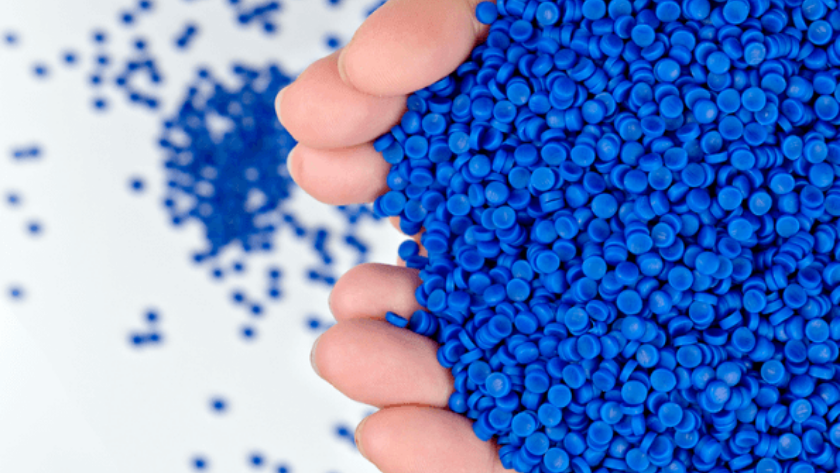LYS Polychem Blog

What is PVC Compound and Where is it Used?
PVC is one of the most preferred types of plastic in the world due to its durability, easy processing, low cost and versatile use. It is used in many areas such as construction materials, shoes, toys and medical products. In this article, we will take a closer look at the definition of PVC, how it is produced, its properties and the areas in which it is used.
What is PVC Compound?
PVC is a synthetic resin obtained by the polymerization of vinyl chloride. In terms of production and consumption, it is the second most widely used material among plastics after polyethylene. It is used in many domestic and industrial products such as raincoats, shower curtains, window frames, roofing and internal plumbing pipes. In its pure form, it has a light and rigid structure. However, flexible "soft" forms are also available.
Components
The main component of PVC is a gas called vinyl chloride (CH₂=CHCl). Vinyl chloride is usually obtained by reacting ethylene with hydrogen chloride and oxygen in the presence of a copper catalyst.
Polyvinyl Chloride (PVC) consists of repeating units of vinyl chloride. Its chemical formula is (CH₂=CHCl)n. Vinyl chloride, the cornerstone of this structure, is a colorless gas also known as chloroethylene.
Environmental Impacts
While PVC offers many advantages, its environmental impact cannot be ignored. Chlorine-based chemicals released during the production and disposal processes can pose environmental risks. Nevertheless, recycling efforts and developments in the field of sustainability offer important steps to reduce these impacts.
PVC Production Process
PVC production involves a multi-stage and controlled process to produce a durable and functional plastic material. The main stages of the process are detailed below:
Polymerization
Production starts with the polymerization of vinyl chloride monomer (VCM). There are three main methods of PVC production: suspension, emulsion and bulk polymerization. Suspension polymerization is the most widely used method on an industrial scale, accounting for about 80% of the world's PVC production.
In this method:
● VCM is first pressurized and liquefied.
● Then it is transferred into a reactor containing water and suspending agents.
● The polymerization process is initiated by adding an initiator (e.g. peroxide). The reaction usually takes place between 40-60 °C under a pressure of several bars.
The function of water is not only to provide a suspension medium but also to control the heat released during the reaction. The process is terminated when the PVC particles, which grow as the polymerization progresses, reach the desired size. The unreacted VCM is recovered by distillation. The resulting PVC particles are centrifuged, dried and obtained as a white powdered resin.
Compounding
The resulting PVC resin is combined with various additives to give it properties suitable for the desired application. This process is called PVC formulation (compounding).
The main additives added to the formulation are:
Thermal stabilizers to prevent thermal degradation
Lubricants for ease of processing and to protect equipment
Plasticizers to add flexibility
Pigments for coloring purposes
Fillers to improve mechanical properties or reduce cost
The ratio of the substances is determined according to the area of use of the product, the desired physical properties and the processing method. The resulting mixture is cooled and turned into a compound that can be used in different production methods.
LYS Polychem PVC Types and Properties
LYS Polychem offers two main types of PVC, Rigid PVC (uPVC) and soft PVC. If we detail these;
Rigid PVC (UPVC)
UPVC is a rigid type of PVC without plasticizers. It is characterized by its high strength and flame resistance. It is generally used for window profiles, door frames, pipes, cable ducts and exterior cladding.
It is processed above 100 °C in order to shape the material while maintaining its hardness. It has a tensile stress of approximately 52 MPa at 20 °C and can be safely used up to 95 °C.
Soft Flexible PVC
Flexible PVC can be used even at low temperatures without losing its form. This structure is obtained by adding certain amounts of plasticizer to PVC. In some applications, the additive content can be as high as 50%. One of the most common additives is di-2-ethylhexyl phthalate (DEHP).
Thanks to its softness, it is preferred in products such as floor tiles, garden hoses, artificial leather upholstery and shower curtains.
PVC Compound Areas of Use
PVC compound finds its place in many different sectors thanks to its features. The most widely used areas can be listed as follows:
Construction Industry: Clean and waste water pipes, window and door profiles, siding, roof membranes and flooring
Electrical and Cabling: Electrical cable insulation, cable transportation and conduit systems
Automotive: Door panels, dashboard cladding, trim parts, wiring harnesses
Health Sector: Medical tubing, serum and blood bags, disposable medical products
Consumer Goods: Household goods such as toys, artificial leather upholstery, inflatable products, shower curtains, tablecloths
Packaging and Bottling: Shrink film, stretch film, blister packaging, rigid plastic bottles
Shoes:Sole production, boots, sneakers
LYS Polychem develops customized solutions for different application needs with flexible and rigid PVC compounds. You can contact us for more information about products that offer high processability and heat resistance.